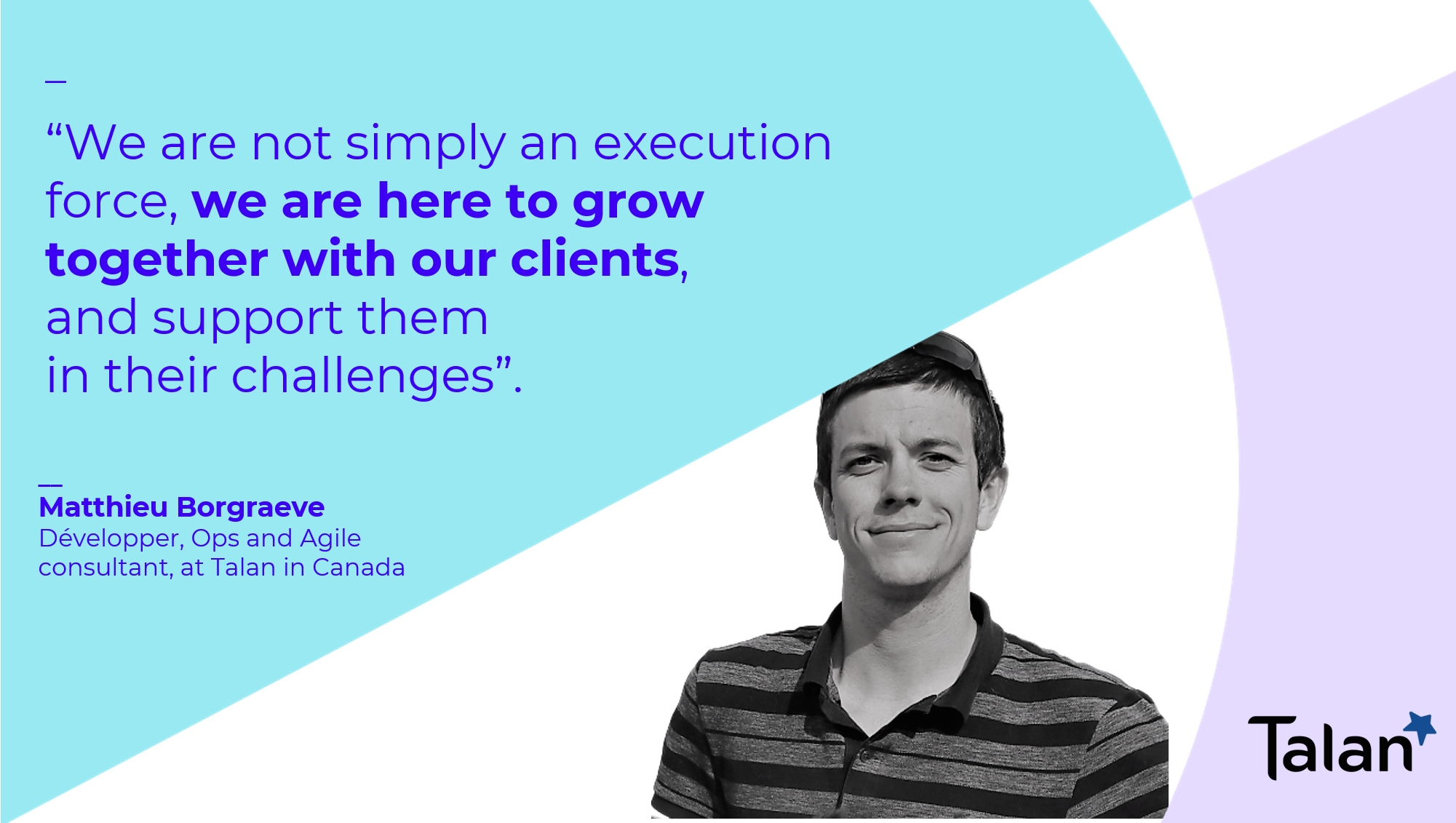By Amaury de BRISOULT, CIO Advisory Director - Talan Consulting, David PETERSEN, Manager CIO Advisory - Talan Consulting, Yaël RAWAT, Senior Manager People & Culture - Talan Consulting, Matthieu RIBOULET, COO - Talan Labs and Guillaume LABORIER, Agile Lead - Talan Opérations
Why agile transformation?
While carrying out projects in agile mode has become commonplace in many ISDs, their widespread implementation often comes up against traditional cultures and operating methods that are firmly rooted in morals. Based on this observation, and regardless of the business sector, many groups are embarking on more ambitious transformations with the stated objective of integrating more agility into their organisation.
These transformations aim to have more responsive and effective teams on projects but also on all other activities.
Such initiatives take place at the company level and call into question processes and ways of acting specific to its culture.
So how can we drive the organisation towards greater agility? Three principles seem essential for this:
- Transformation players share a common vision and embrace the guiding principles of transformation
- Agility is part of the company's culture enabling the adaptation of its organisation
- The transformation itself is carried out in an agile manner
Shared vision and guiding principles
The agile approach is carried out by iteration and does not require an extremely precise vision of the final result. Nevertheless, the teams share a vision of the objective and guiding principles.
Thus, for an agile transformation, it will not be so much a question of defining a precise target x years from now with a detailed roadmap linking the projects along n axes, but rather of building a common vision and instituting a virtuous approach of continuous improvement within each team.
Agility is only a means of improving the company and not an end in itself. It is therefore necessary to analyse how it can provide an appropriate response to the problems of the organisation. For example, it is often accepted that agility strongly encourages innovation, with more flexible and less monolithic project structures. Similarly, a product-oriented organisation makes it possible to bring the Business and IT teams together throughout the life cycle of IS services. Ultimately, the aim remains to provide the Business Line with responses adapted to its problems and a better service.
In addition, formalising this vision is an effective lever for mobilising leaders and engaging them in transformation.
Once the common vision has been established and shared, the teams at the heart of the transformation will be more effective if they also develop a common culture of agility.
Develop a common culture of agility
In a transformation programme, the acculturation of teams to agility is developing through experiments and concrete implementation.
To do this, it involves getting all the teams on board from the start of the transformation, benefiting from collective intelligence and integrating comments and feedback quickly and, where necessary, adapting the organisation of the programme.
One of the common biases regarding agility is to align with an existing methodology or standard (Scrum, SAF e, etc.). The risk is to become a prisoner of the method without developing a real culture. On the contrary, successful agile transformations often rely on good practices derived from several frames of reference that are largely adapted to the constraints and specificities of the organisation by experimentation on the ground.
A reflection on the integration of agility into company culture is therefore necessary as part of a systemic approach:
- understand the context and organisation,
- identify how agility impacts the current cultural traits of the company and the professional identity of the different professions (for example, what is being a project manager, being a project owner/project manager, being a manager, etc.),
- take into account specific constraints,
- … all this in order to implement a tailor-made transformation, acting on the company's DNA as well as on operating methods.
Finally, support for managers is a real key success factor. They must be made aware of agile culture as early as possible to change their thinking and attitudes.
Make the transformation agile
Traditional approaches to business transformation are proven. But can we really make the company more agile without carrying out an agile transformation in itself? What agility will provide the company with a traditional approach following a month of diagnosis, three months of defining a target operational model and one year of implementation?
The transformation project must therefore set an example by involving employees and participating in their acculturation to agility.
In this sense, the chosen approach will apply the key principles of agility:
- Team empowerment
- Experimentation on the ground
- Operational “solutions” before they are documented
- Modest size changes
- Iterative and incremental progress
To do this, we will use feedback from the field to address the projects to be carried out.
Each project will thus be conducted on a "test & learn" cycle for a few weeks, through collaborative workshops, followed by the definition of the best candidate solution, its real test by team members and its retrospective: abandonment, completion or extension to other scopes.
All these projects will form the backlog of the transformation that will take place according to their progress and the launch of new projects. Transformation management will focus on:
- Maintaining the consistency of the workstreams with the vision and between them
- Communication and sharing of best practices thus instituted
- The organisation of regular events (by quarter for example) to measure the progress made and put the next cycle of projects into perspective
Thus, a true agile culture of continuous improvement will emerge concretely and gradually. This will be directly experienced by the employees and much more sustainable than a "classic" transformation because it is rooted in practices.



